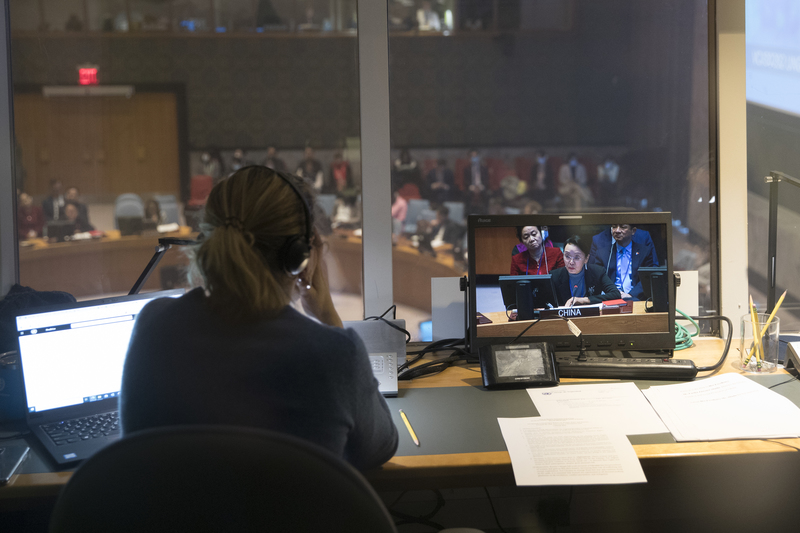In the fast-paced world of international business, conferences, and diplomacy, overseas interpretation services are often the invisible bridge that connects ideas across languages. But here's a common dilemma: Do you splurge on premium interpreters to ensure flawless communication, or hunt for bargains to keep budgets in check? The truth is, neither extreme guarantees success. The myth that "more expensive always means better" can lead to unnecessary overspending, while chasing the cheapest option might result in costly misunderstandings. Instead, the real key lies in pursuing *value for money*—high-quality interpretation that delivers results without breaking the bank. This approach not only optimizes your investment but also minimizes risks in high-stakes scenarios. Drawing from industry insights, let's explore how to strike that perfect balance.
Unveiling the Cost Breakdown: What Really Drives Interpretation Prices
Understanding the pricing of overseas interpretation services starts with dissecting the elements that shape a quote. Unlike a simple product, interpretation is a skilled, human-driven service where costs reflect expertise, logistics, and preparation. According to a 2023 report by the International Association of Conference Interpreters (AIIC), average daily rates for professional interpreters range from $500 to $1,200, depending on variables like location and specialization. Here's a closer look at the major factors influencing these figures:
- Language Pair and Rarity: Common languages like English-Spanish or English-Mandarin often cost less due to a larger pool of qualified interpreters—typically $600–$800 per day. In contrast, rare pairs such as English-Swahili or specialized dialects can push rates up to $1,000 or more, as supply is limited. Data from the U.S. Bureau of Labor Statistics (2024) shows that interpreters for less common languages earn 20–30% higher median wages, reflecting the scarcity premium.
- Interpretation Mode: Simultaneous interpretation (real-time translation via headsets, common in conferences) demands intense concentration and often requires teams of two or more, inflating costs by 50% compared to consecutive interpretation (turn-based, suited for smaller meetings). Remote simultaneous interpretation (RSI) has surged in popularity post-pandemic, with a Common Sense Advisory study (2022) noting it can reduce expenses by up to 40% by eliminating travel needs.
- Subject Matter Expertise: Technical fields like legal, medical, or engineering require interpreters with domain-specific knowledge, adding a premium. For instance, a pharmaceutical conference might cost 25% more than a general business meeting, per AIIC benchmarks, because preparation involves mastering jargon and regulations.
- Duration and Workload: Rates are often structured per half-day or full-day, with overtime kicking in after six hours. Extended events or high-intensity sessions can lead to fatigue-related surcharges to maintain quality.
- Travel and Logistics: Overseas assignments frequently include flights, accommodations, and per diems, which can double the base fee. A 2024 survey by the Globalization and Localization Association (GALA) found that travel expenses account for 30–50% of total costs in in-person international gigs.
By grasping these components, you can better negotiate and tailor services to your needs, avoiding surprises in the final bill.
Strategies to Save Without Sacrificing Quality
Achieving high-value overseas interpretation doesn't mean cutting corners—it means smart planning. Here are proven tactics to trim costs while upholding professional standards, backed by real-world data and expert recommendations.
Book Early for "Early Bird" Advantages
Last-minute bookings are a recipe for inflated prices and limited options. Interpreters' schedules fill up quickly, especially during peak seasons like international trade fairs. By reserving 3–6 months in advance, you can secure better rates and top talent. A 2023 GALA report highlights that early bookings can yield discounts of 10–20%, as providers appreciate the predictability. Plus, it gives interpreters ample time to prepare, reducing the need for rushed, expensive add-ons.
Clearly Package Your Requirements
Ambiguity in your brief can lead to scope creep and extra charges. Define the event's scope upfront: exact dates, session lengths, attendee numbers, and any special needs like equipment. This prevents mid-project additions, such as extending hours or adding languages, which AIIC data shows can increase costs by 15–25%. A well-packaged request also allows providers to offer bundled deals, turning potential overruns into savings.
Opt for the Right Interpretation Mode
Not every scenario demands in-person simultaneous interpretation. For virtual meetings or webinars, remote options like RSI platforms (e.g., Zoom with interpretation features) are game-changers. According to a 2022 UNESCO study on multilingual events, RSI cut costs by an average of 35% during the COVID-19 era without compromising accuracy, thanks to advancements in audio tech. It's ideal for non-confidential discussions or when travel is impractical, but stick to in-person for sensitive negotiations where nuances like body language matter.
Supply Comprehensive Materials in Advance
Interpreters aren't mind readers—they thrive on preparation. Providing glossaries, agendas, slides, and reference documents early can shave hours off their research time, potentially lowering quotes by 10–15%, as noted in a 2024 AIIC guideline. This not only streamlines the process but also enhances accuracy, ensuring your message lands as intended.
Beware of Low-Price Pitfalls: The Hidden Dangers
Tempted by rock-bottom rates? Think twice. Subpar interpretation can torpedo deals, spark legal issues, or damage reputations. For example, a 2023 case study from the European Court of Auditors revealed that poor interpretation in EU trade talks led to misunderstandings costing millions in renegotiations. In business, inaccurate medical or legal translations have resulted in lawsuits, with the American Translators Association (ATA) estimating that translation errors contribute to 5–10% of global contract disputes annually.
The red flags? Uncertified interpreters lacking credentials from bodies like AIIC or ATA often undercut prices but deliver flawed work. Always verify qualifications, portfolios, and references. Remember, skimping here isn't savings—it's a gamble that could multiply your risks exponentially.
Wrapping It Up: Smart Investments for Seamless Success
Navigating the cost-quality trade-off in overseas interpretation services boils down to informed choices: debunk the price myths, dissect costs, implement savvy strategies, and steer clear of cheap traps. By prioritizing value—through early planning, clear specs, mode selection, and preparation—you safeguard your objectives without excess spending. As the AIIC aptly puts it, "Quality interpretation isn't an expense; it's an investment in clarity and trust." In a globalized economy, that wise allocation of resources isn't just economical—it's essential for thriving across borders. If you're planning an international event, start with a thorough needs assessment today to unlock true high-value outcomes.











